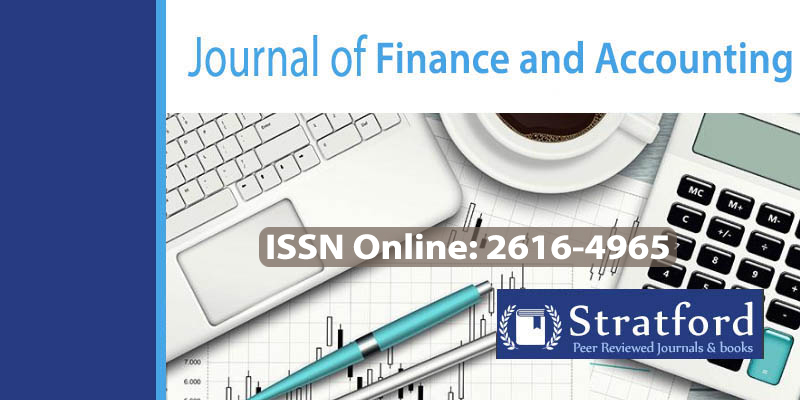Effect of Savings Generated After Repayment of Women Enterprise Fund Loan On Profitability of the Women-Owned Enterprises in Kajiado County, Kenya
DOI:
https://doi.org/10.53819/81018102t2523Abstract
Women-owned enterprises in Kajiado County demonstrate lower profitability compared to neighboring counties despite comparable growth rates in enterprise numbers. This study investigated the effect of savings generated after repayment of Women Enterprise Fund loans on the profitability of women-owned enterprises in Kajiado County, Kenya. Anchored on the Free Cash Flow Theory, the study employed a positivism philosophy and explanatory research design, targeting 8,100 women entrepreneurs who accessed the Women Enterprise Fund between 2018 and 2022. Using Yamane's formula, a sample of 381 respondents was selected through stratified random sampling across five sub-counties, achieving a 72.4% response rate. Data was collected using structured questionnaires and analyzed using Stata version 17, employing descriptive statistics. The findings revealed a strong positive correlation between savings and profitability (r = 0.930, p = 0.000). Regression analysis demonstrated that savings significantly and positively affect profitability (β = 2.255, p = 0.000). The study concludes that savings constitute a critical determinant of enterprise profitability, providing financial resilience and reinvestment capacity. It recommends strengthening savings incentive programs, linking savings behavior to loan eligibility, implementing financial literacy training emphasizing savings management, and establishing accessible savings infrastructure. Further research should explore sector-specific effects and additional profitability determinants in other counties.
Keywords: Women Enterprise Fund, Savings Mobilization, Enterprise Profitability
References
Adetiloye, K., Adegboye, F., & Akinjare, V. (2020). Sustainable financial access for female entrepreneurs in the micro, small and medium enterprises sectors in Nigeria. Taylor & Francis.
Akinyemi, F., & Adeola, O. (2022). Challenges facing women entrepreneurs in Sub-Saharan Africa. Journal of Business, 12(3), 1–22.
Cohen, J. (1988). Statistical power analysis for the behavioral sciences (2nd ed.). Lawrence Erlbaum Associates.
International Finance Corporation. (2021). Women, business and the law 2021. World Bank.
Jensen, M. C. (1986). Agency costs of free cash flow, corporate finance, and takeovers. American Economic Review, 76(2), 323–329.
Julius, S., & Rugami, M. (2021). Microcredit services and performance of women-owned enterprises in Kilifi County, Kenya. International Journal of Business Management, Entrepreneurship and Innovation, 2(4), 52–62.
Kariuki, J., & Wambui, S. (2022). The impact of support programs on women-owned MSMEs in Machakos County. Journal of Small Business and Enterprise Development, 29(4), 673–688.
Kinyanjui, J., & Nyakangi, M. (2020). Effect of women groups' credit access, savings and training on women economic empowerment in Nyamira County, Kenya. Journal of Economics and Finance, 11(2), 1–12.
Lazonick, W. (2014). Critique of short-termism in corporate governance. Journal of Economic Issues, 48(2), 319–337.
Lusweti, M. (2021). Effect of microfinance services on the performance of women-owned micro and small enterprises in Busia County, Kenya. International Journal of Finance and Accounting, 6(1), 23–38.
Munuve, A., Githui, T., & Omurwa, J. (2020). Effects of microfinance services on the performance of women-based enterprises in Kenya: A case of Ongata Rongai. African Journal of Emerging Issues, 2(1), 1–12.
Musyimi, M. N., & Mwasiaji, E. (2019). Microfinance service and performance of women-owned small scale business enterprises in Nairobi City County, Kenya. International Academic Journal of Economics and Finance, 3(1), 1–15.
Mutua, E., & Muriithi, J. (2023). Performance and profitability of women-owned MSMEs in Nakuru County. African Journal of Business Management, 17(1), 123–139.
Mwangi, J., Wanjiru, M., & Otieno, D. (2023). Effect of entrepreneurship training on sustainable small and medium enterprise growth in Nairobi City County, Kenya. African Journal of Social Sciences and Education, 3(1), 71–90.
Ngugi, I., & Mungai, D. (2021). Impact of Women Enterprise Fund on MSME performance in Kenya. Journal of Financial Economics, 15(4), 67–84.
Nyamboga, T., & Ali, Y. (2020). Kenya Women Trust Fund and its impact on women entrepreneur's performance. International Journal of Business and Finance Research, 8(3), 45–61.
Nyandieka, L. (2022). Access to financial resources and implementation of women-owned income-generating projects in Ongata Rongai, Kajiado County (Unpublished master's thesis). University of Nairobi.
Onyango, G. O., & Muchira, B. W. (2023). Cash management practices and financial performance of small and medium sized enterprises in Nairobi City County, Kenya. The Strategic Journal of Business & Change Management, 10(1), 754–771.
Smith, C. W. (1990). Dividend taxation and corporate financial policy. Journal of Public Economics, 41(1), 3–29.
United Nations. (2019). Fund for Gender Equality annual report 2018–2019. UN Women.
Women Enterprise Fund. (2023). Women Enterprise Fund in Kenya. Retrieved from http://www.womenenterprisefund.com
Women Enterprise Fund. (2024). Annual report 2023. Government of Kenya.
Women Enterprise Fund. (2025). Beneficiary data for Kajiado County (2018–2022) [Unpublished raw data]. Women Enterprise Fund Headquarters.
Wombo, D., Ogaga, E., & Tsetim, J. (2020). Effect of microfinance institution services on the performance of women-owned small and medium enterprises in Benue State, Nigeria. East African Scholars Journal of Economics, Business and Management, 3(6), 123–135.
Yamane, T. (1967). Statistics: An introductory analysis (2nd ed.). Harper and Row.
Zvirikuzhe, C. (2022). The influence of microfinance institutions programs on women-owned small and medium enterprises (SMEs) development in Mashonaland West Province of Zimbabwe (Doctoral dissertation). Chinhoyi University of Technology, Zimbabwe.



